One of history's most famous — and bloodthirsty — legendary creatures, vampires have terrified human beings for centuries.
In 1892, a group of frightened villagers in Exeter, Rhode Island gathered at the town’s graveyard with shovels and a grim task. Slowly but surely, they began to dig up the fresh soil that covered the grave of 19-year-old Mercy Brown. Brown had died about two months earlier, but there was something about her death that unsettled the townspeople. They’d come to believe that she was a vampire, intent on draining the life from her sick brother.
Brown was allegedly found in her grave with a lifelike flush in her cheeks. The villagers, convinced they had a vampire on their hands, burned her heart and liver. They then had her brother consume the ashes (he died anyway, probably of tuberculosis like Mercy, his mother, and other sister).
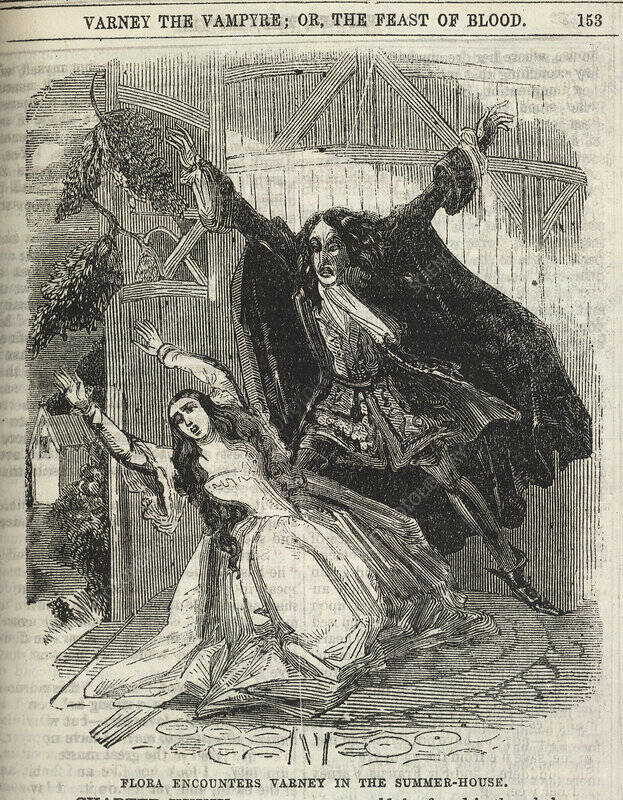
Public DomainVarney the Vampire, one of the early depictions of vampires in fiction. 1845-1847.
Their exhumation of Mercy Brown may sound excessive and dramatic today, but the villagers of Exeter belong to a long history of people fearing vampires. Fanged and bloodthirsty, these supernatural creatures have stalked the darkest corners of human imagination for centuries.
So where did the idea of vampires come from? How has it developed over the years? And have real vampires ever existed in history?
The Vampiric Monsters Of The Ancient World

Public DomainA 19th-century depiction of Lilith by John Collier. Some believe this demonic figure of Jewish folklore was a vampire.
For as long as humans have been afraid of the dark, they’ve been afraid of the unseen monsters that may lurk there. And the history of vampires is an age-old one. Many ancient cultures had vampiric-like monsters in their mythology, though they differed from the modern-day legends.
In Mesopotamia, people feared creatures called Ekimmu, which could drain someone’s life force. Meanwhile, ancient Egyptian mythology describes how Sekhmet, the daughter of the sun god Ra, had an insatiable thirst for human blood. And Jewish folklore describes how Lilith, believed by some to be the first wife of Adam, feeds on her victims. Some stories suggest Lilith is responsible for men’s erotic dreams and she “causes them to emit seed.”
Creatures like these had one thing in common: They drained something vital from humans. Whether life force, blood, or “seed,” these ancient spirits were vampiric in how they interacted with the living. But our modern conception of vampires as fanged, sunlight-avoiding bloodsuckers came much later.
The “Vampyri” Terrorizing Serbian Villagers
Modern-day ideas about vampires began to take form in the Middle Ages. As PBS reports, the first written reference to a vampire can be traced to an Old Russian text written in 1047, which describes monsters called “upir.” The term “vampire,” however, didn’t appear until centuries later in 1725.
That year, frightened villagers in Kisiljevo (located in present-day Serbia) appealed to a health and safety official called the Kameral Provisor for help. They believed that a dead man named Petar Blagojević was responsible for spreading disease and death throughout their village. Not only had his widow claimed that she’d seen him, but nine other villagers also insisted that he’d “laid himself upon them, and throttled them” during the night.
About 24 hours later, they all died.
The Provisor, a man named Frombald, wrote to his superiors that the villagers knew exactly what they were dealing with: a “vampyri,” the Serbian word for “back from the dead.” Frombald himself conducted the autopsy and found that Blagojević’s corpse seemed “completely fresh” and even had fresh blood around his mouth. When the determined villagers drove a stake through Blagojević’s corpse, Frombald reported that “much blood, completely fresh” flowed out of the dead man’s body.

Public DomainA 19th-century depiction of villagers burning the heart out of an alleged vampire.
News of Frombald’s report, and others like it, quickly spread.
Today, we know that the Serbians were hardly alone when they took their crusade against a “vampire” into their own hands. In recent years, archaeologists have uncovered “vampire graveyards” in Poland, where they’ve found a woman buried with a sickle laid across her neck and a child with a padlock around their ankle, both dating from the 17th century, as well as a mass grave of decapitated “vampires” from between the 18th and 19th centuries with coins in their mouths and bricks weighing them down.
Like in the case of Mercy Brown, the villagers of Kisiljevo “killed” the “undead” Blagojević to stop him from spreading disease around his village. The villagers in Poland also probably did something similar (though it’s possible that some “vampires” in those cases were merely social outcasts).
Indeed, scholars suspect that many of our ideas about vampires today come from a misunderstanding about diseases and how they spread.
How Disease Formed The Modern Vampire
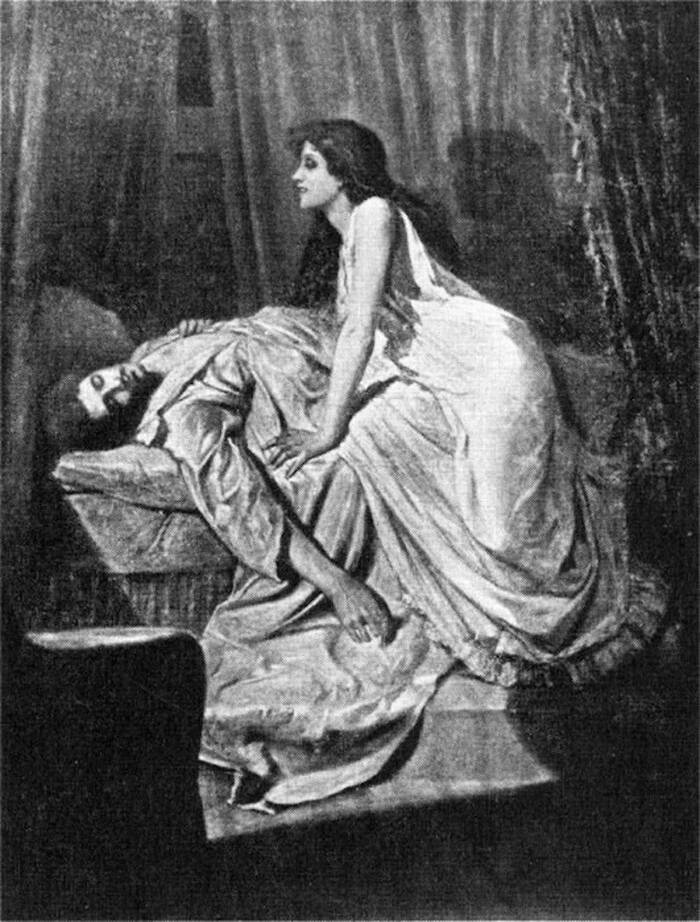
Public Domain/Wikimedia CommonsA depiction of a vampire by painter Philip Burne-Jones. 1897.
In Blagojević and Brown’s cases, vampires were used to explain the spread of disease. But vampires were also used to explain the symptoms of diseases, which, in turn, became “signs” of vampirism in many people’s eyes.
Take rabies. PBS reports that a rabies outbreak in 18th-century Europe dovetailed with the rise of vampire stories. Its symptoms — including insomnia and aversion to light — fit in snugly with our modern-day ideas of vampires, who sleep during the day and prowl at night. Plus, rabies is caused by animal bites and vampires are known to bite their victims.
Likewise, pellagra, which results from a corn-heavy diet, can cause an aversion to sunlight. Europeans would have been eating more corn than ever before in the 18th century, since they finally had widespread access to the North American crop. Similarly, the disorder porphyria can cause blisters on the skin when the victim is exposed to sunlight, as well as hallucinations.
There’s also the plague. Not only did this disease circulate quickly and seemingly inexplicably, causing people to seek explanations and ways to stem its spread, but its victims sometimes had bleeding mouth lesions. And tuberculosis — which caused such fear in Mercy Brown’s Exeter — caused victims to lose weight, cough up blood, and die a slow death. To some, it might seem that a supernatural force was “sucking” their life away.
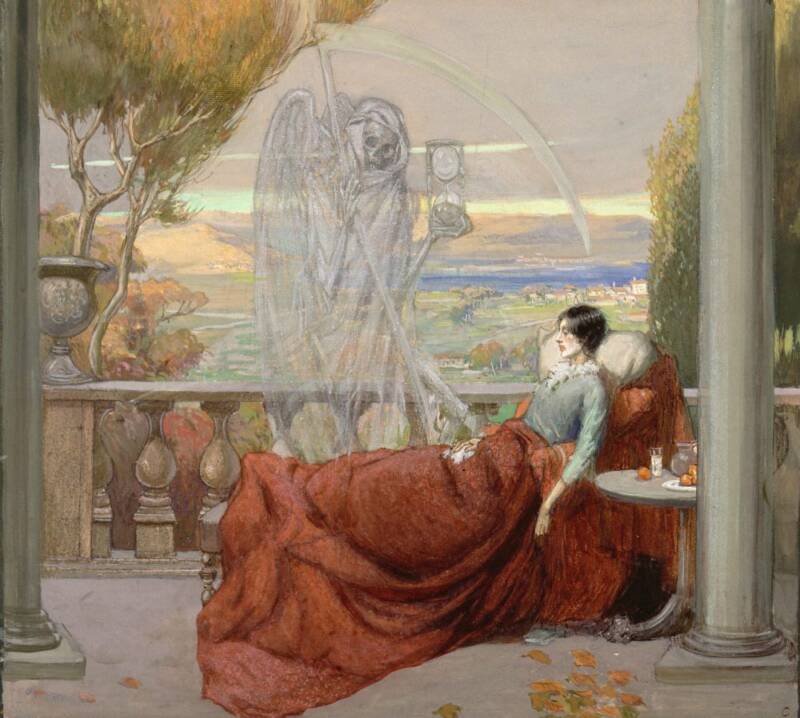
Wellcome CollectionAn early 20th-century depiction of a young woman dying of tuberculosis, watched over by the specter of death.
Disease, then, played a huge role in forming early versions of the vampire myth. Not only did people blame “vampires” for spreading disease from the grave, but some scholars believe that the symptoms of diseases also became conflated with characteristics of vampires.
Of course, all of this might have remained in the realm of obscure legends had vampirism not made its way into bestselling fiction.
From “Der Vampir” To Dracula
As fears about vampires spread, leaders like Pope Benedict XIV offered assurances that the monsters were not real. He declared that vampires were “fallacious fictions of human fantasy” in the mid-18th century. But it was within the realm of fantasy that the vampire legend continued to grow.
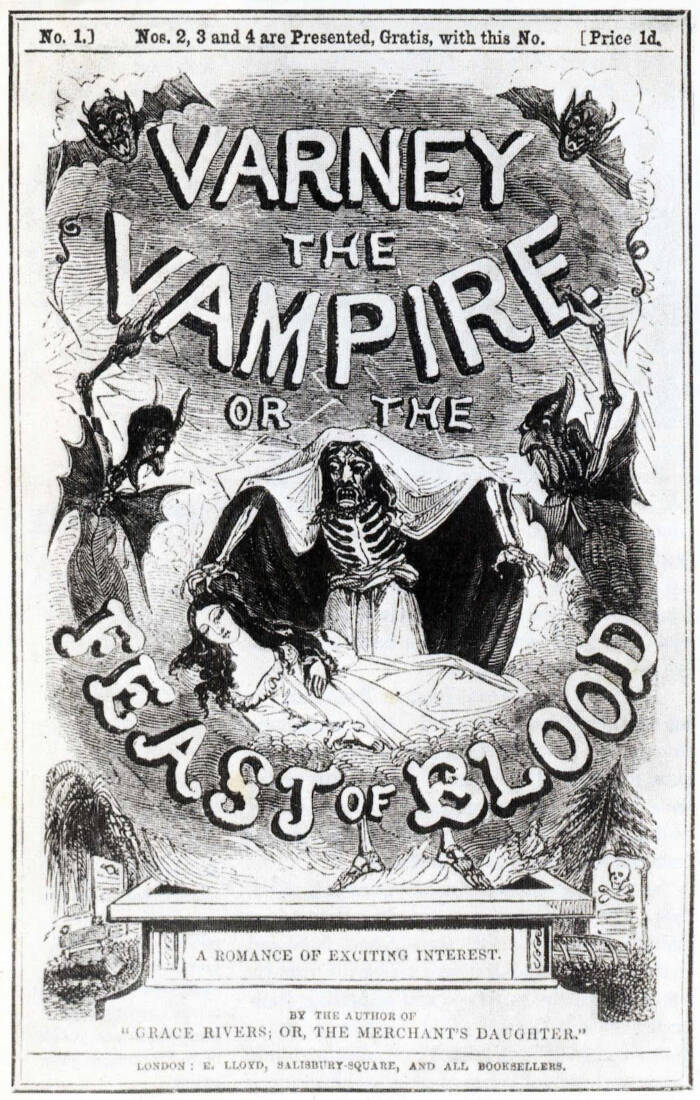
Public DomainThe 19th-century story Varney the Vampire predates Dracula, and began to solidify ideas about vampires in fiction.
In the decades after Blagojević’s fellow villagers drove a stake through his un-beating heart, vampires started appearing in poetry and prose. German poet Heinrich August Ossenfelder wrote “Der Vampir” in 1748 about a young woman who is seduced by a vampiric narrator. He was followed by English poets like John Stagg, who wrote “The Vampyre” in 1810 and Lord Byron, who wrote “The Giaour” in 1813. In 1819, John William Polidori’s story The Vampyre — probably the first prose piece about vampires in English — tells the frightening tale of an aristocrat who seduces women and drinks their blood.
Between 1845 and 1847, vampire stories spread even wider with Varney the Vampire, a serialized story of penny dreadfuls that described a reluctant vampire named Varney and his misadventures. The series lay down some common vampire tropes, like that vampires have long fangs.
Then, in 1897, came Bram Stoker’s Dracula.
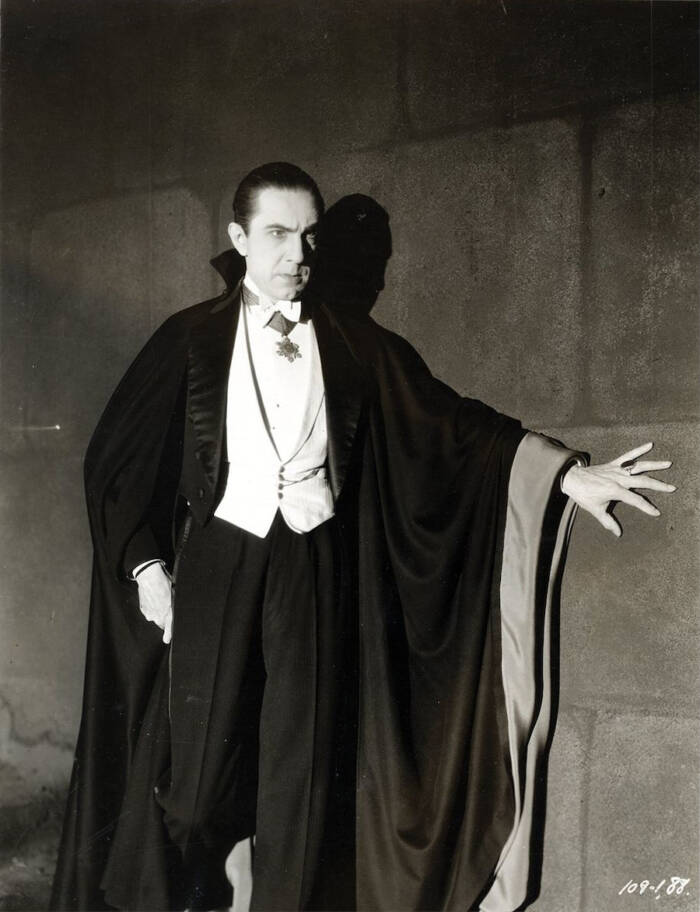
Universal Studios/Wikimedia CommonsActor Bela Lugosi in the 1931 film Dracula.
Characters in Stoker’s novel described Dracula as having sharp teeth and an “extraordinary pallor,” as being “cruel-looking,” and boasting “a smile that Judas in hell might be proud of.” He has superhuman strength, does not have a shadow, and turns people into vampires by sucking their blood.
Additionally, he has the power to turn himself into a bat. But Stoker’s vampire also had weaknesses like crucifixes and garlic.
Depictions of Count Dracula have varied over the years. Some films made him suave and debonair; others depicted him as terrifying and bloodthirsty. And though Stoker was not the first writer to describe vampires, Dracula has informed many people’s ideas of what a vampire looks and acts like.
Dracula is, at the end of the day, a fictional character. But they say that art is drawn from life. So have there been examples of any real vampires?
The “Real” Vampires Of The World
Do vampires exist? The villagers who dug up Mercy Brown and Petar Blagojević would probably answer with a resounding yes. But the answer really depends on how you define the term “vampire.”
If you’re looking for the undead or for people who can turn into bats, then the answer is no. But there have certainly been violent rulers and serial killers throughout human history with vampiric tendencies.
The most famous example is the violent 15th-century Wallachian ruler Vlad the Impaler, who allegedly had a taste for blood. Also known as Vlad Dracula, this ruler impaled thousands of his enemies, once wrote a letter bragging about how he and his warriors had “killed 23,884 Turks,” and is thought to have been responsible for the deaths of over 60,000 people.
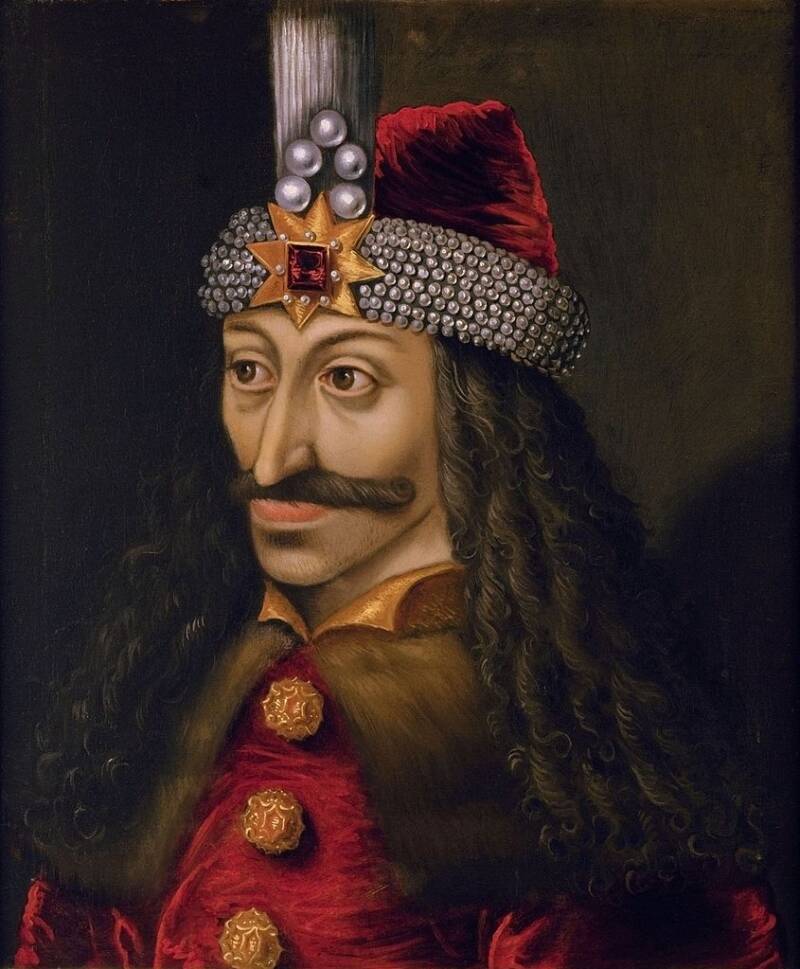
Wikimedia CommonsVlad the Impaler was a bloodthirsty ruler who may have inspired Bram Stoker as he created the character of Dracula.
Vlad Dracula also allegedly dipped his bread in the blood of his enemies before consuming it (this claim is, unsurprisingly, difficult to verify) and some believe that Bram Stoker based his character of Dracula on the Wallachian ruler. Scholars have debated the veracity of this in recent years, and National Geographic reports that Stoker drew from many different sources.
However, it is a known fact that Stoker came across the name “Dracula” while reading a history book. Afterward, he wrote an important note to himself: “Voivode (Dracula): Dracula in Wallachian language means DEVIL. Wallachians were accustomed to give it as a surname to any person who rendered himself conspicuous either by courage, cruel actions, or cunning.”

Wikimedia CommonsFritz Haarmann was an early 20th-century serial killer known as the “Vampire of Hanover.”
Then, there have also been serial killers with decidedly vampiric tendencies. Take Fritz Haarmann, an early 20th-century German serial killer known as the “Vampire of Hanover.” He earned his nickname because he killed some of his victims by biting through their windpipes (what he called a “love bite”).
Thus, even though vampires may not really be lurking around dark corners, it’s true that these creatures have haunted the human imagination since ancient times. Vampiric demons like Lilith first emerged several centuries ago, and medieval fears about death and disease only solidified chilling myths about how the “undead” could wreak fatal havoc on communities.
But it was writers in recent history who helped define the vampire as we know it today. Poetry, Varney the Vampire, and, of course, Bram Stoker’s Dracula formed the familiar bloodsucking specter that terrifies audiences in modern times. Today, vampires have taken yet another leap, as movies like Twilight and television shows like True Blood (and even What We Do In The Shadows) continue to remake the vampire legend anew.
After reading about the long and spooky history of vampires, look through these terrifying stories of mythical creatures from around the world. Or, delve into some of the oddest and eeriest legends of cryptids.





